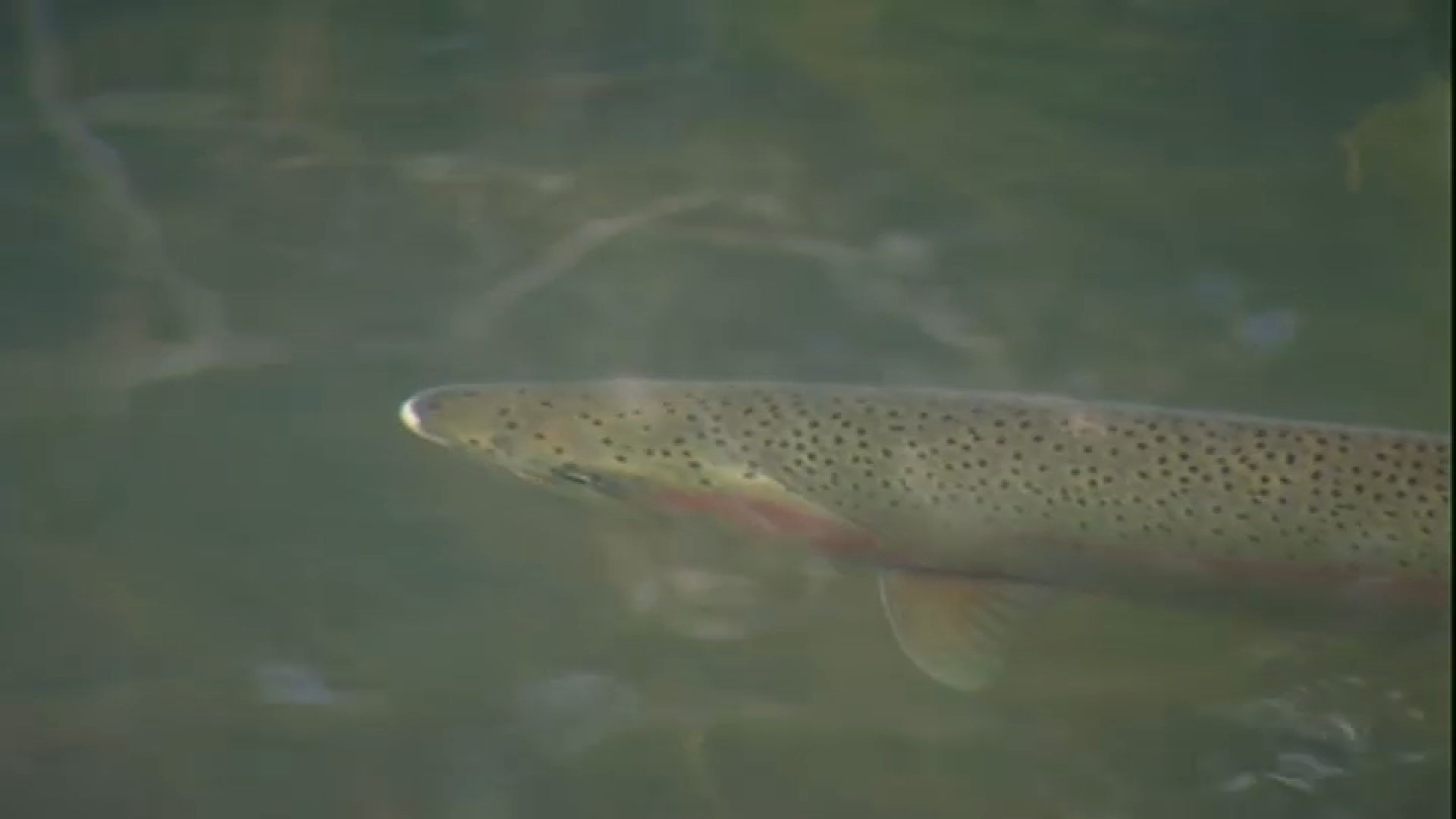Emerging from obscurity, a tiny freshwater creature that has been a pest to boaters and water system managers for the past seven years is now making the drought even more difficult in one area.
The invasive pest is the Quagga mussel, a shellfish smaller than your thumbnail, but so prolific at reproducing it can leave room for little else.
"They will clog intake pipes. They will clog valves," said Jim Green, water systems operations manager for the Metropolitan Water District.
Native to Central Asia, quagga somehow made their way to North America. In 2007 they were discovered in the Colorado River, a major source of water for the Southwest, distributed via a network of canals and reservoirs, virtually all of which have now become quagga infested.
The MWD now spends $3 to 5 million a year on Quagga maintenance, removing the mussels from water delivery systems, only to see them reappear.
"There's no way to eradicate them," Green lamented.
There's no evidence Quagga present any health hazard, and so far, MWD has been able to work around them.
But now, in this third year of drought, Quagga have become a factor in preventing — or at least delaying — Colorado River water from being delivered to one district that could use it to replenish rapidly dropping groundwater.
Affected is the Upper San Gabriel Valley Municipal Water District, an MWD member that serves 18 cities and nearly a million residents in its 144-square mile service area.
It's a region that depends heavily on groundwater, historically replenished mainly by runoff from the San Gabriel Mountains, and to a lesser extent by imported water — both of which have been drastically reduced during this drought.
The water table, as measured at the designated key well for the San Gabriel's main basin, is now 17 feet below what is considered the minimum operating level, according to the office of the Watermaster for the Main San Gabriel Basin.
To make up for the lack of runoff, the Upper Valley District has sought to purchase 19,000 acre feet of water from MWD.
But so far this year it has received only 11,000, all from northern California via the state water project and its California Aqueduct, which so far has eluded Quagga contamination.
Dry conditions to the north have slashed the availability of water from the aqueduct.
As the region's largest wholesaler, MWD does not rely solely on the state water project.
California
News from across California
It also imports water from the Colorado River, which so far has been less affected by the drought, and despite the Quagga issues, has made up for much of the cut in state water project deliveries.
The problem for the Upper San Gabriel Valley is how to get Colorado River water to spreading grounds for replenishment.
There is no direct connection to the Ben Lomond Spreading Grounds in Covina; the only existing link is via the San Dimas Wash, a county flood control channel.
But because the flood control system remains Quagga free — and Los Angeles County Public Works is bound by force of law to try to keep it that way — deliveries of water from the Colorado River have been prohibited in flood control channels.
There have been efforts to develop a workaround.
MWD has been working with the California Department of Water Resources on a protocol for chlorinating Colorado River water to kill Quagga and enable the water to be transported through uninfested systems.
The permit process to allow the San Dimas Wash to carry treated Colorado River water to the Ben Lomond spreading grounds is now in the public comment phase, Green said.
But Ben Lomond and an adjacent sister basin can offer only so much help.
Together, they have a storage capacity of no more than 5,000 acre feet, which would help, but represents only a fraction of the needed replenishment, according to Shane Chapman, general manager of the Upper District.
A few miles to the west of the Ben Lomond, the flood control system leads to the much larger basins along the San Gabriel River bed.
However, because there are locations along the route which never dry out and could allow Quagga to become established, even chlorinating would not be considered a sufficient safeguard, and Colorado River water could not be delivered.
Currently, Upper Valley receives 50 acre feet a week of state project water from MWD.
Even before Upper Valley's emergency resolution called on MWD to deliver more water, MWD had agreed to triple weekly deliveries to 150 acre feet, but only for the next month.
Availability of water will be re-evaluated at that point, Green said.
Upper Valley's Chapman sees a need for more, but thinks that will buy the district some time.
"What Metropolitan is doing for us today will allow us to eke through until we see how this winter develops," Chapman said.
As it is, retail water companies that pump groundwater have run into situations in which the water table is dropping below well intakes.
The San Gabriel Valley Water Company lowered the intakes for three of its wells, according to Dan Arrighi, water resources manager.
Increasing the number of wells is not seen as a solution.
"It's just a matter of getting water to the wells," Arrighi said.
Though he would welcome the availability of more water for replenishment, he does not second guess the precautions being taken to prevent the spread of the Quagga mussel, and does not think it would be wise to risk infestation in the San Gabriel Valley.
"Then how do you get rid of it?"
In an effort to stop the Quagga's spread, boaters have been required to wipe down their vessels, and have them inspected before being launched in uninfected lakes and reservoirs.
The move to stop the Quagga's advance even has a slogan: "Don't move a mussel!"



